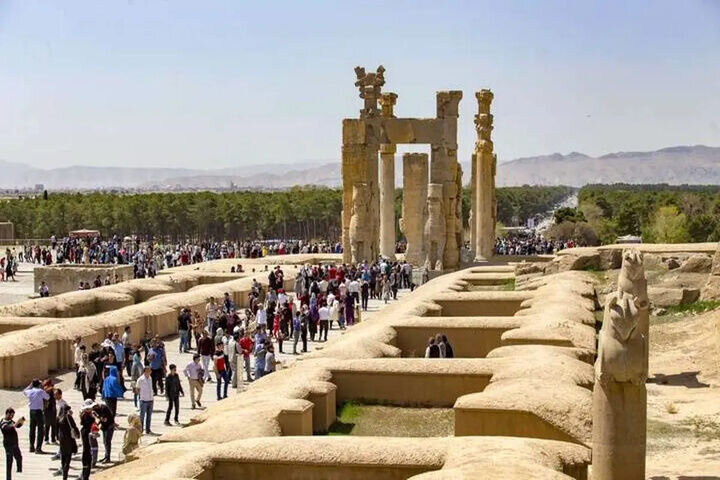Ancient stone fragment from Persepolis returned to authorities

TEHRAN - A stone fragment believed to originate from Persepolis has been officially handed over to the Cultural Heritage, Handicrafts and Tourism Directorate of Fars province, where the UNESCO World Heritage site is located.
Mohammad Sabet-Eqlidi, who presides over the directorate, confirmed that the stone was discovered on the evening of April 2 (Farvardin 13, the final day of Nowruz vacations) near the entrance road to the ancient site of Persepolis. The area, historically known as the city of Parseh, is rich in surface and subsurface archaeological remains.
“This piece was found within the boundaries of the Persepolis complex,”Sabet-Eqlidi said, noting that no damage or theft from the original structures has occurred. “No stone was removed or looted from its original place,” he emphasized.
He further explained that due to the historical significance of Parseh, which is considered one of the world's most valuable heritage sites, it is not uncommon for ancient artifacts to resurface over time, especially in areas with frequent foot traffic.
The stone was voluntarily handed over to authorities by the individual who discovered it, demonstrating a positive example of public cooperation in heritage preservation.
Elsewhere in his remarks, Sabet-Eqlidi has also announced plans for new archaeological excavations in the area, set to begin within the current Persian calendar year.
The royal city of Persepolis ranks among the archaeological sites that have no equivalent, considering its unique architecture, urban planning, construction technology, and art. Persepolis, also known as Takht-e Jamshid, whose magnificent ruins rest at the foot of Kuh-e Rahmat (Mountain of Mercy) is situated 60 kilometers northeast of the city of Shiraz in Fars province.
The city was burnt by Alexander the Great in 330 BC apparently as revenge to the Persians because it seems the Persian King Xerxes had burnt the Greek City of Athens around 150 years earlier. The city’s immense terrace was begun about 518 BC by Darius the Great, the Achaemenid Empire’s king. On this terrace, successive kings erected a series of architecturally stunning palatial buildings, among them the massive Apadana palace and the Throne Hall (“Hundred-Column Hall”).
This 13-ha ensemble of majestic approaches, monumental stairways, throne rooms (Apadana), reception rooms, and dependencies is classified among the world’s greatest archaeological sites. Persepolis was the seat of the government of the Achaemenid Empire, though it was designed primarily to be a showplace and spectacular center for the receptions and festivals of the kings and their empire.
AM
Leave a Comment